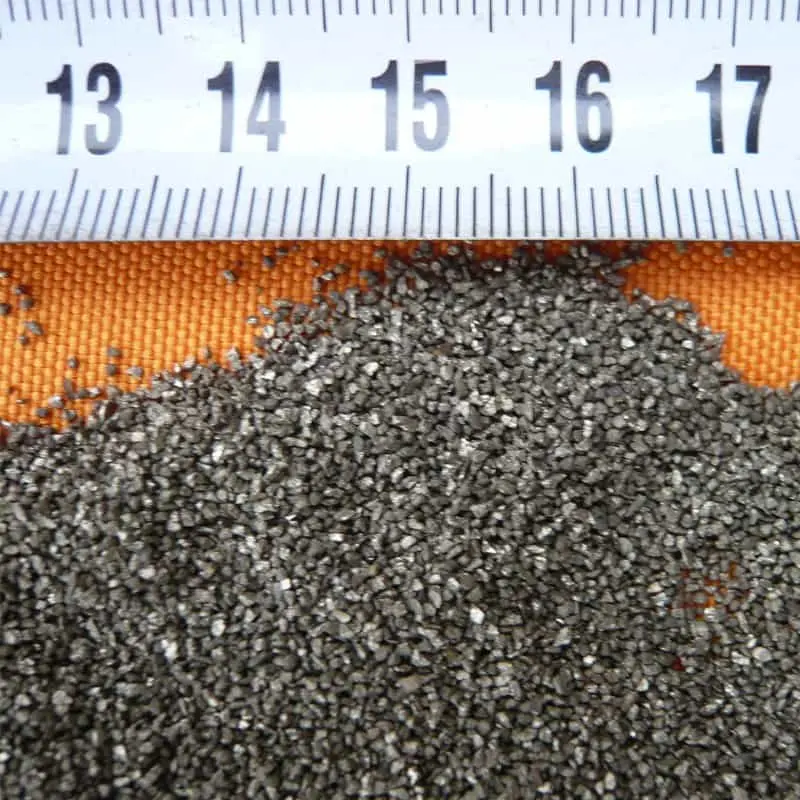Pyrite sand has become increasingly popular for use in decorative floors due to its unique appearance and durability. However, selecting the right type of pyrite sand is crucial to ensure a successful outcome. Here are some selection recommendations to help you make an informed decision:
1. Color and Grain Size
The color and grain size of pyrite sand can vary significantly. Choose a color that complements the overall design of your space and the surrounding materials. Finer-grained sand will result in a smoother surface, while coarser-grained sand will create a more textured finish.
2. Mineralogical Composition
Pyrite sand should contain a high percentage of pyrite minerals to ensure its metallic luster and durability. Look for sand with a purity of at least 90%. Avoid sand with excessive amounts of impurities, such as quartz or calcite.
3. Particle Shape
The shape of the pyrite particles can affect the appearance and performance of the floor. Angular particles will create a more textured surface, while rounded particles will result in a smoother finish. Rounded particles are also less likely to abrade or scratch.
4. Durability and Hardness
Pyrite sand is a relatively hard mineral, but it can still be scratched or damaged if not properly treated. Choose sand with a Mohs hardness of at least 6 to ensure its durability.
5. Chemical Resistance
Pyrite sand is resistant to most chemicals, making it suitable for use in areas with high traffic or potential chemical exposure. However, it can be affected by strong acids or bases.
6. Cost and Availability
The cost of pyrite sand can vary depending on the grain size, color, and purity. Determine the budget and availability of pyrite sand in your area before making a selection.
Additional Tips:
- Consider purchasing samples of different pyrite sands before making a final decision.
- Test the sand for chemical resistance if it will be exposed to potential chemical spills or cleaning agents.
- Seal the floor with a high-quality sealer to protect it from moisture, dirt, and wear.
- Regularly clean the floor with a mild detergent and water.
By following these selection recommendations, you can choose the right pyrite sand for your decorative floor project and ensure its long-term beauty and durability.
Frequently Asked Questions
1. What is the best grain size for pyrite sand flooring?
The ideal grain size for pyrite sand flooring depends on the desired surface texture. Finer-grained sand (120-150 mesh) will produce a smoother surface, while coarser-grained sand (60-80 mesh) will create a more textured finish.
2. How can I test the durability of pyrite sand?
To test the durability of pyrite sand, conduct a scratch test using a sharp object. If the sand scratches easily, it may not be suitable for use in high-traffic areas.
3. Is pyrite sand suitable for outdoor use?
Yes, pyrite sand can be used for outdoor floors as it is resistant to moisture and weathering. However, it is important to seal the floor with a high-quality sealer to protect it from freezing temperatures.
4. What is the average cost of pyrite sand flooring?
The average cost of pyrite sand flooring can vary depending on the grain size, color, and purity of the sand. Typically, it ranges from $10-$30 per square foot.
5. Can pyrite sand be used in epoxy flooring systems?
Yes, pyrite sand can be used in epoxy flooring systems as it provides a metallic shimmer effect. It is important to ensure that the sand is dry and free of dust before mixing it with the epoxy resin.
6. What is the recommended thickness for pyrite sand flooring?
The recommended thickness for pyrite sand flooring is 1/4 inch to 1/2 inch. A thicker layer will provide a more textured surface and enhance the metallic luster.
Table: Properties of Pyrite Sand for Decorative Floors
| Property | Value |
|---|---|
| Color | Gold to brassy yellow |
| Grain Size | 60-150 mesh |
| Mineralogy | Pyrite >90% |
| Hardness | 6-6.5 Mohs |
| Density | 5.0 g/cm³ |
| Chemical Resistance | Resistant to most acids and bases |
Conclusion
The selection of pyrite sand for decorative floors is a crucial step in ensuring the success and longevity of the project. By carefully considering the color, grain size, mineralogical composition, particle shape, durability, chemical resistance, cost, and availability, you can make an informed decision that will enhance the aesthetics and performance of your decorative floor.

